The AMD Radeon R9 Fury Review, Feat. Sapphire & ASUS
by Ryan Smith on July 10, 2015 9:00 AM ESTOverclocking
Finally, no review of a high-end video card would be complete without a look at overclocking performance.
As was the case with the R9 Fury X two weeks ago, overclockers looking at out of the box overclocking performance are going to come away disappointed with the R9 Fury cards. While cooling and power delivery are overbuilt on both the Asus and Sapphire cards, the R9 Fury is still very restricted when it comes to overclocking. There is no voltage control at this time (even unofficial) and the card’s voltage profile has been finely tuned to avoid needing to supply the card with more voltage than is necessary. As a result the card has relatively little overclocking potential without voltage adjustments.
| Radeon R9 Fury Series Overclocking | |||||
| Ref. R9 Fury X | ASUS R9 Fury | Sapphire R9 Fury OC | |||
| Boost Clock | 1125MHz | 1075MHz | 1100MHz | ||
| Memory Clock | 1Gbps (500MHz DDR) | 1.1Gbps (550MHz DDR) | 1.1Gbps (550MHz DDR) | ||
| Power Limit | 100% | 115% | 100% | ||
| Max Voltage | 1.212v | 1.169v | 1.212v | ||
Neither R9 Fury card is able to overclock as well as our R9 Fury X, indicating that these are likely lower quality (or lower headroom) chips. Ultimately we’re able to get another 75MHz out of the ASUS, for 1075MHz, and another 60MHz out of the Sapphire, for 1100MHz.
Meanwhile with unofficial memory overclocking support now attainable via MSI Afterburner, we’ve also tried our hand at memory overclocking. There’s not a ton of headroom here before artifacting sets in, but we were able to get another 10% (50MHz) out of both R9 Fury cards.
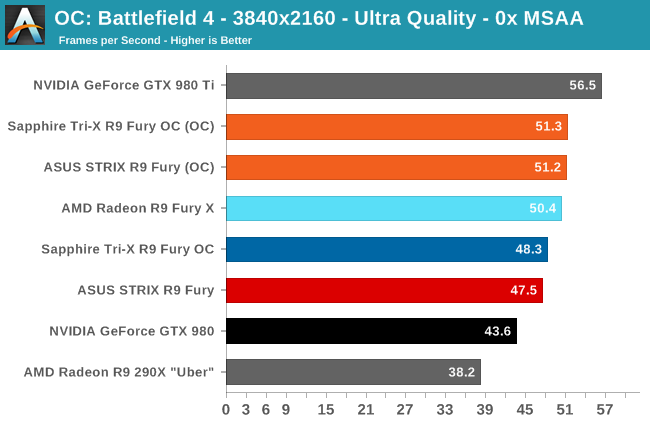
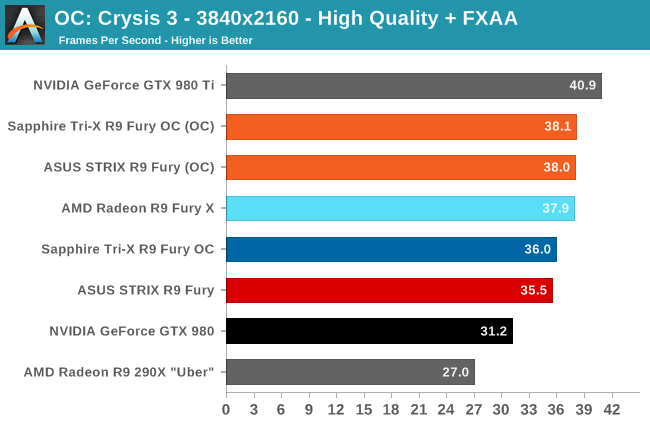
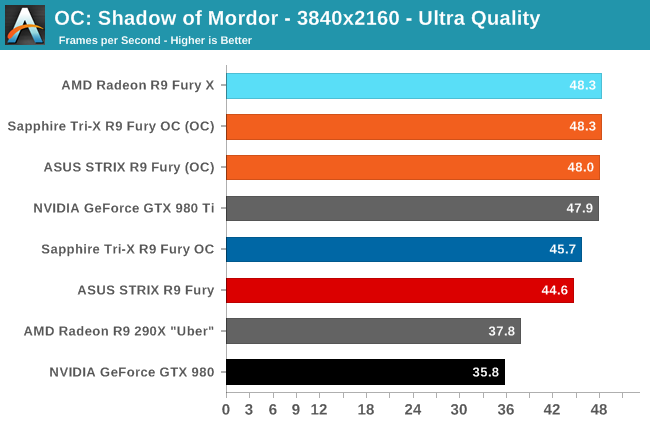
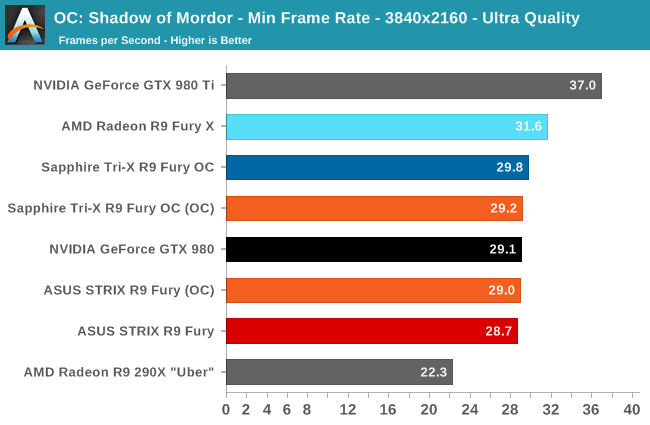
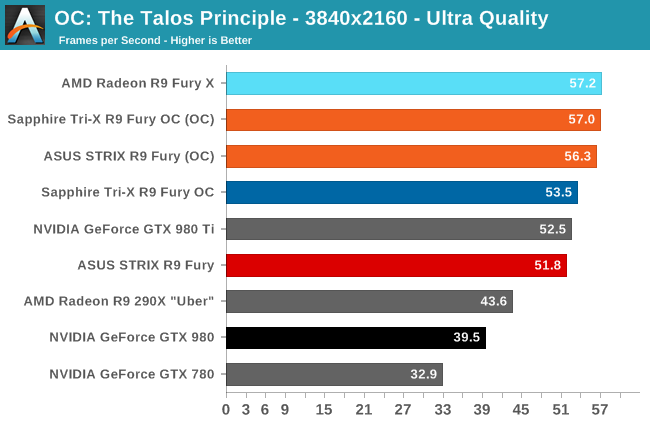
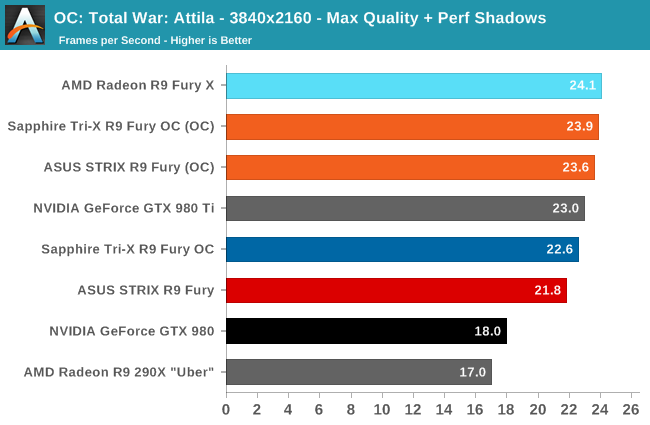
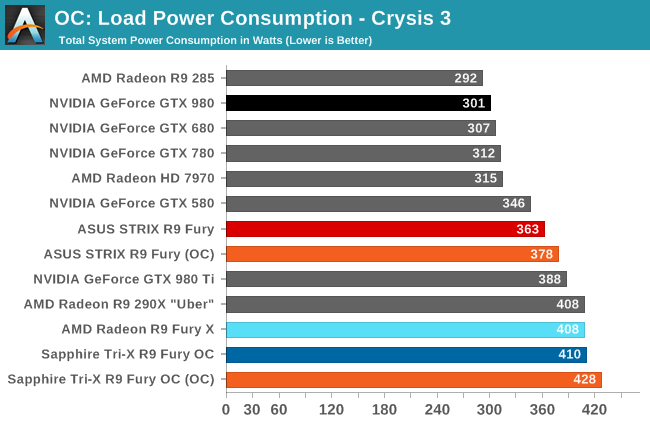
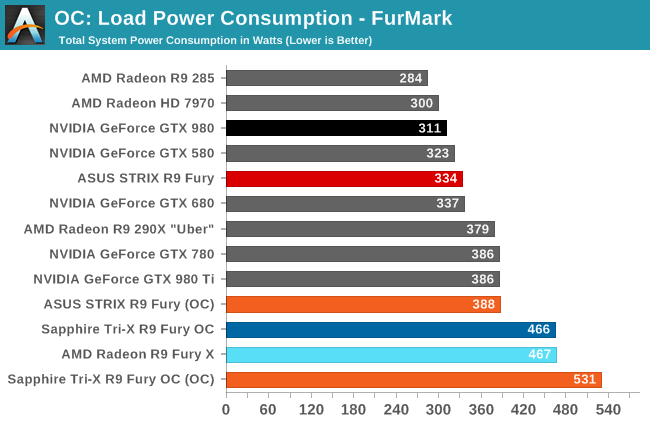
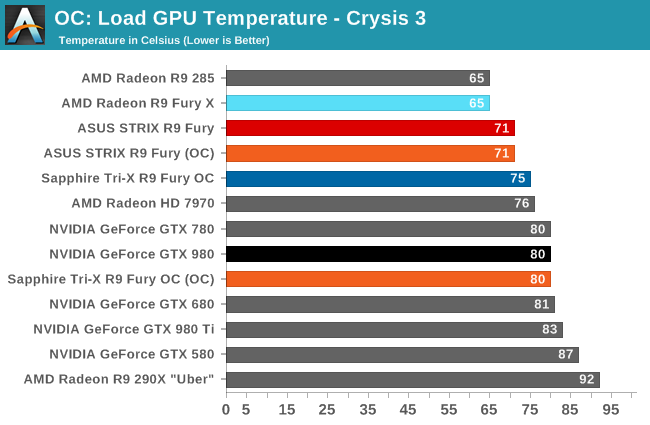
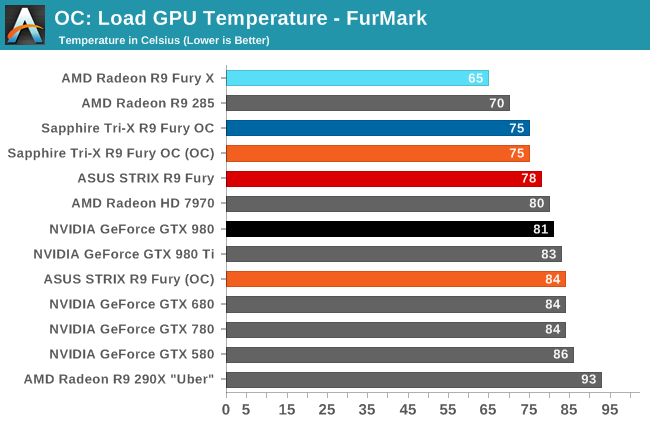
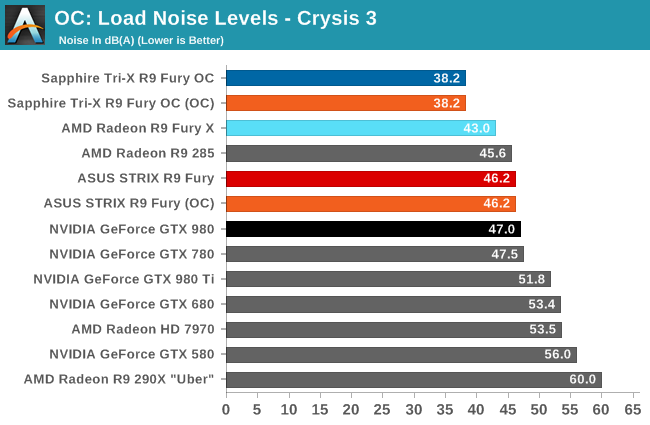
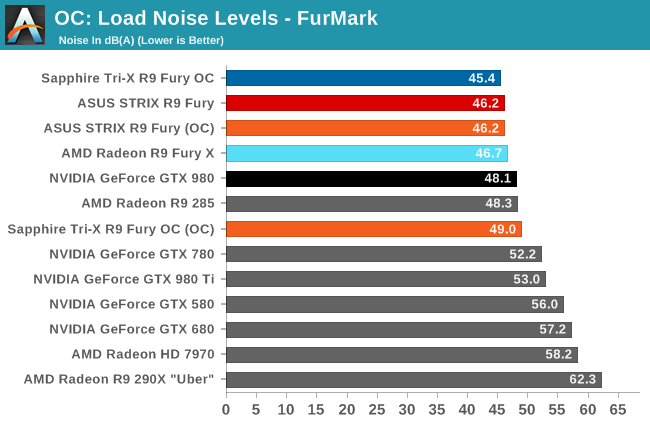
Using our highest clocking card as a reference point, the Sapphire card, the actual performance gains are in the 7-10% range, with an average right up the middle at 8% over a reference clocked R9 Fury. This is actually a bit better than the R9 Fury X and its 5% performance gains, however it’s still not going to provide a huge difference in performance. We’d need to be able to overclock to better than 1100MHz to see any major overclocking gains on the R9 Fury cards.










288 Comments
View All Comments
Midwayman - Friday, July 10, 2015 - link
I'd love to see these two go at it again once dx12 games start showing up.Mugur - Saturday, July 11, 2015 - link
Bingo... :-). I bet the whole Fury lineup will gain a lot with DX12, especially the X2 part (4 + 4 GB won't equal 4 as in current CF). The are clearly CPU limited at this point.squngy - Saturday, July 11, 2015 - link
I don't know...Getting dx12 performance at the cost of dx11 performance sounds like a stupid idea this soon before dx12 games even come out.
By the time a good amount of dx12 games come out there will probably be new graphics cards available.
thomascheng - Saturday, July 11, 2015 - link
They will probably circle around and optimize things for 1080p and dx11, once dx12 and 4k is at a good place.akamateau - Tuesday, July 14, 2015 - link
DX12 games are out now. DX12 does not degrade DX11 performance. In fact Radeon 290x is 33% faster than 980 Ti in DX12. Fury X just CRUSHES ALL nVIDIA silicon with DX12 and there is a reason for it.Dx11 can ONLY feed data to the GPU serially and sequencially. Dx12 can feed data Asynchronously, the CPU send the data down the shader pipeline WHEN it is processed. Only AMD has this IP.
@DoUL - Sunday, July 19, 2015 - link
Kindly provide link to a single DX12 game that is "out now".In every single review of the GTX 980 Ti there is this slide of DX12 feature set that the GTX 980 Ti supports and in that slide in all the reviews "Async Compute" is right there setting in the open, so I'm not really sure what do you mean by "Only AMD has this IP"!
I'd strongly recommend that you hold your horses till DX12 games starts to roll out, and even then, don't forget the rocky start of DX11 titles!
Regarding the comparison you're referring to, that guy is known for his obsession with mathematical calculations and synthetic benchmarking, given the differences between real-world applications and numbers based on mathematical calculations, you shouldn't be using/taking his numbers as a factual baseline for what to come.
@DoUL - Sunday, July 19, 2015 - link
My Comment was intended as a reply to @akanateauOldSchoolKiller1977 - Sunday, July 26, 2015 - link
You are an idiotic person, wishful think and dreams don't make you correct. As stated please provide a link to these so called DX12 games and your wonderful "Fury X just CRUCHES ALL NVidia" statement.Michael Bay - Sunday, July 12, 2015 - link
As long as there is separate RAM in PCs, memory argument is moot, as contents are still copied and executed on in two places.akamateau - Tuesday, July 14, 2015 - link
Negative. Once Graphic data is processed and sent to the shaders it next goes to VRAM or video ram.System ram is what the CPU uses to process object draws. Once the objects are in the GPU pipes system ram is irrelevant.
IN fact that is one of AMD's stacked memory patents. AMD will be putting HBM on APU's to not only act as CPU cache but HBM video ram as well. They have patents for programmable HBM using FPGA's and reconfigurable cache memory HBM as well.
Stacked memory HBM can also be on the cpu package as a replacement for system ram. Can you imagine how your system would fly with 8-16gb of HBM instead of system ram?